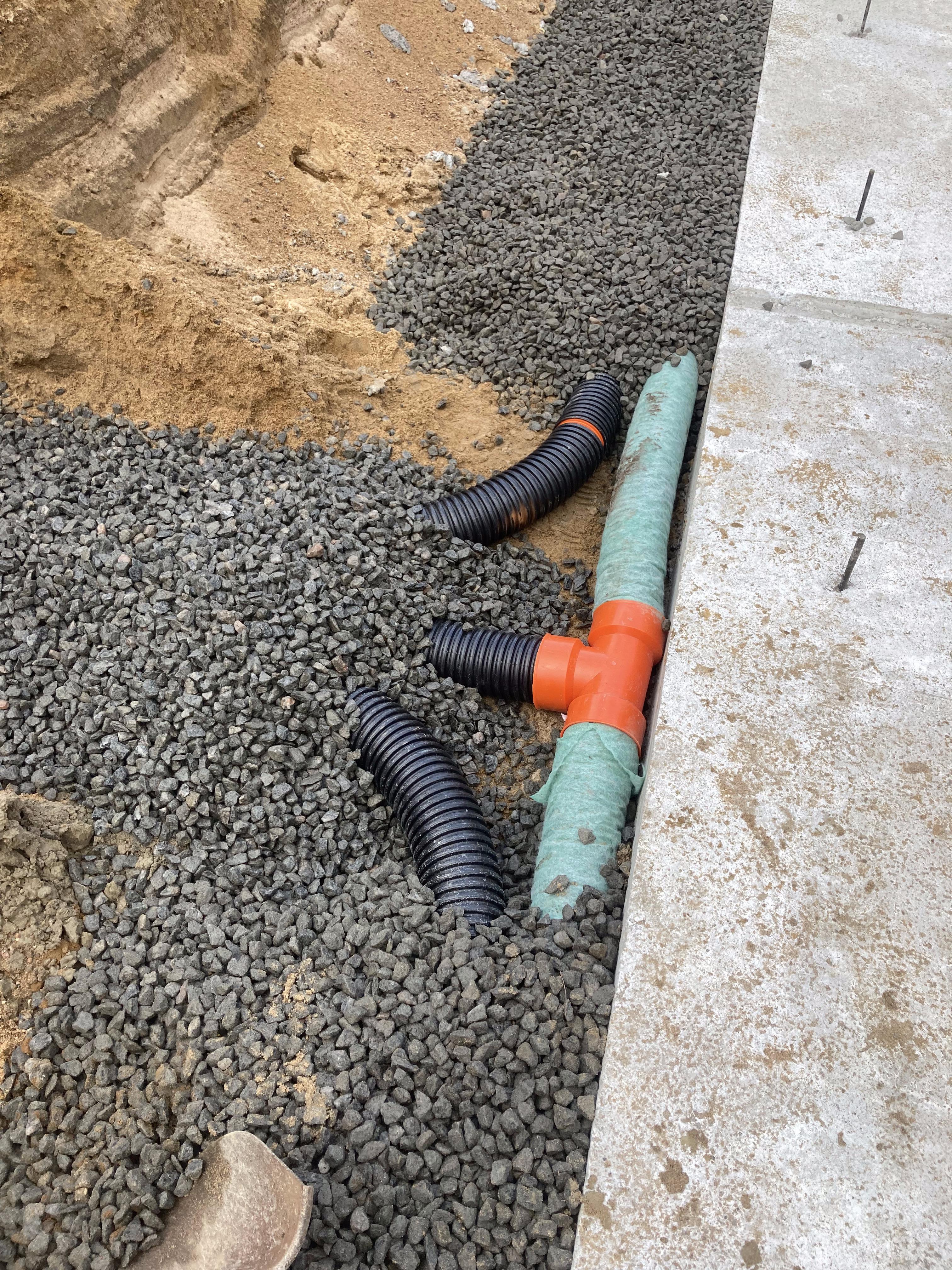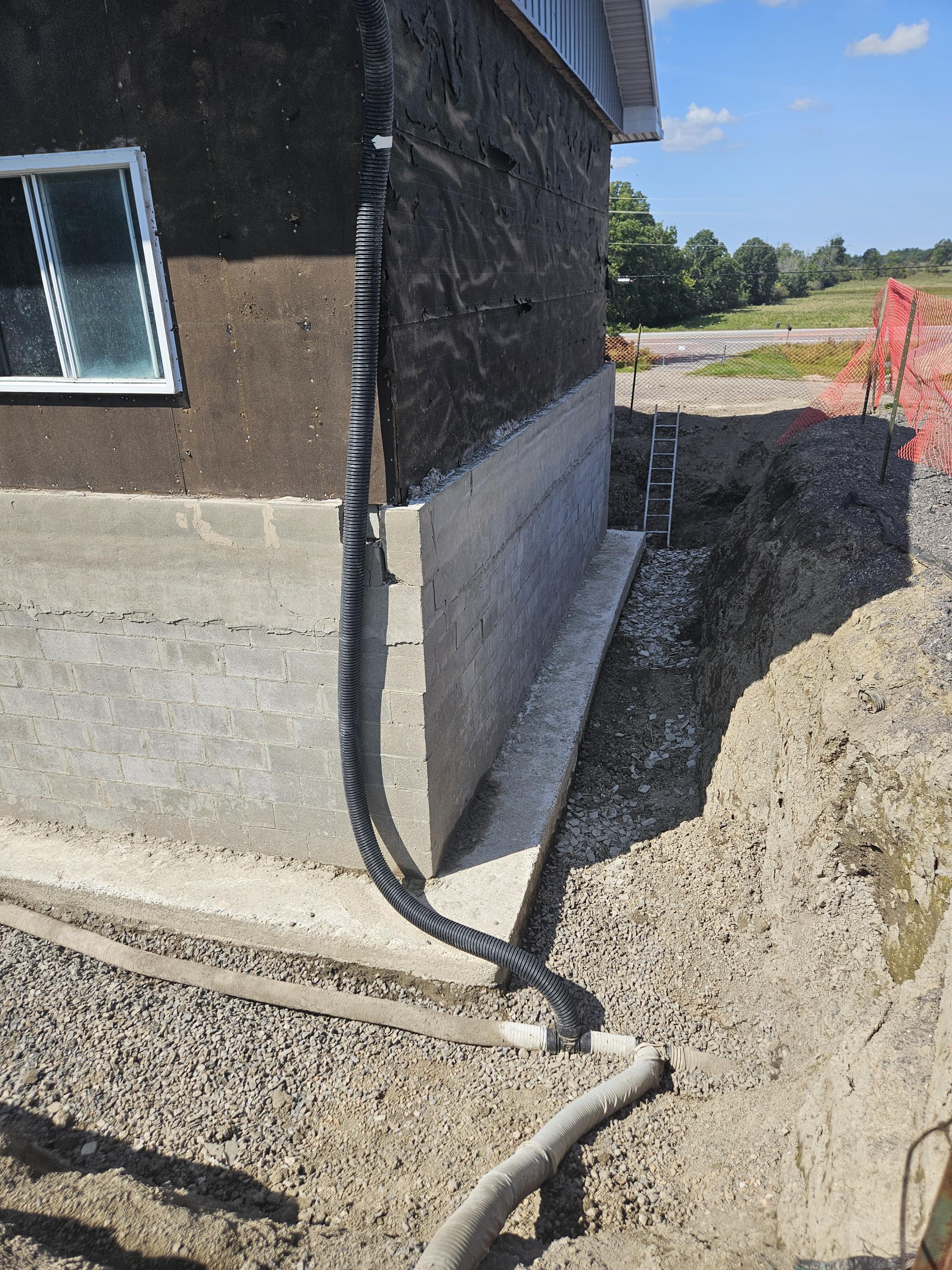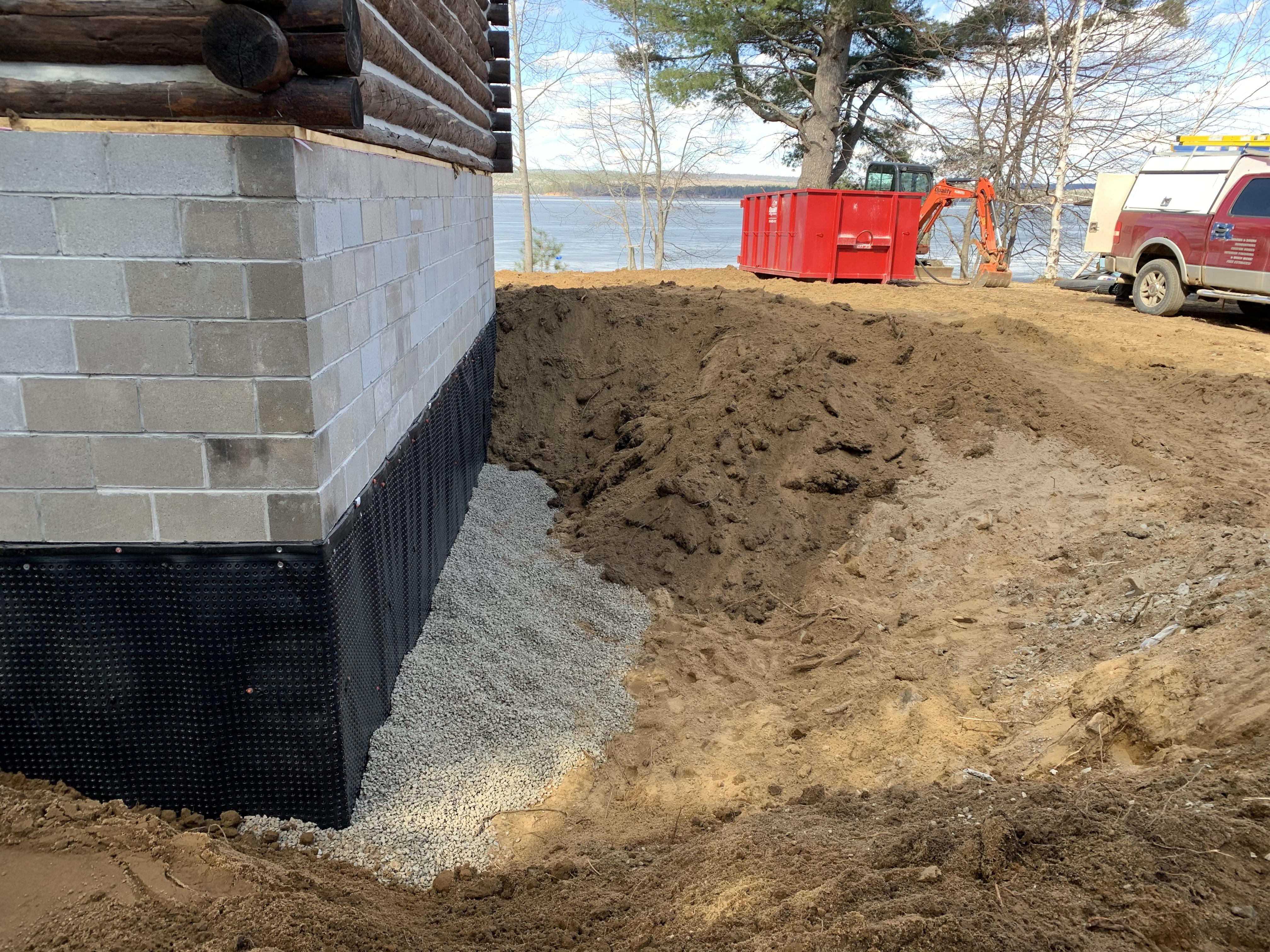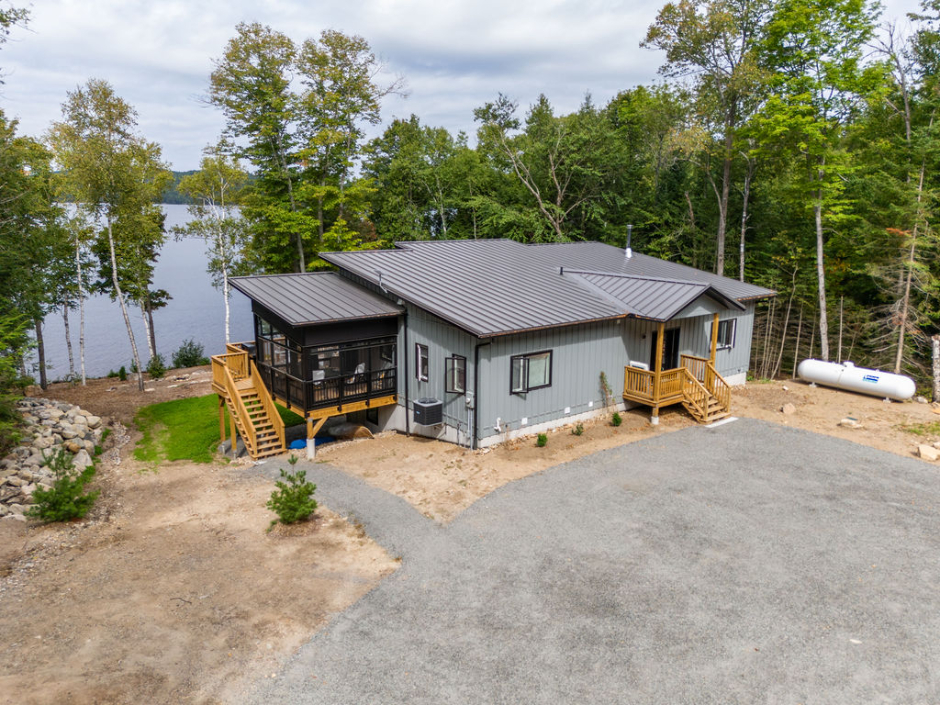Foundation Drainage & Landscaping
In our previous post, we covered foundation waterproofing methods, highlighting their importance. However, these methods should be considered the last line of defense against water infiltration. To truly protect your foundation, it's critical to have the correct drainage and landscaping. These steps divert bulk water away from your foundation, allowing waterproofing measures to repel the moisture that remains.

Drain Tile Installation
A drain tile is a 4-inch diameter, perforated pipe wrapped in fabric and placed around the perimeter of your foundation's footing. Surrounding it is ¾” clear stone, a crushed stone without fine particles. This stone's coarse texture allows water to flow quickly into the drain tile. The combination of stone and tile creates a void, diverting water away from your basement.
The drain tile system is sloped to drain water away from the foundation. If your site features a sloping lot, the water can "drain to daylight," allowing gravity to naturally direct water away from the home. Incorporating a landscaping feature, like large stones at the drainage point, will prevent soil erosion.
In sites that don’t allow for a natural slope, a dry well is a practical alternative. A dry well is a pit filled with fast-draining materials like clear stone. It holds water temporarily during heavy rainfall, allowing it to drain quickly once the rain stops.
The drain tile is also connected to your home’s sump pit. Ideally site topography lets us drain this to daylight or a dry well, but in cases where that’s not possible, a sump pump is installed to actively remove water from your home.

Eavestrough Drainage
Installing an eavestrough drainage system is another crucial step in managing stormwater. The best time to plan and install this drainage system is before backfilling your foundation. 4” solid pipe is placed around the foundation, with additional pipe extending above grade at each future downspout location. The downspouts will drain into the piping, which drains the rainwater either to daylight or to a dry well. Water running directly off the roof can pool around the home, and the eavestrough drainage prevents this.
Backfill for Proper Drainage
After installing both the drain tile and eavestrough systems, the next step is to backfill the foundation. If the excavated soil is suitable, such as sand or pit run, it can be reused as backfill. These materials provide excellent drainage. In cases where the soil is clay or a similar poor-draining material, importing suitable backfill is essential. Using the correct material ensures water flows quickly into the drain tiles and is directed away from the home.

Landscaping to Prevent Water Pooling
The final piece of the puzzle is landscaping. The land around your home should slope away from the foundation, preventing surface water from pooling. This is planned during excavation to ensure the foundation footing is placed at the correct level, considering the height of the foundation walls. After rough grading, the area is ready for topsoil and seeding, with grass soon to follow.

Conclusion
Proper foundation drainage and landscaping are key to keeping water away from your home and out of the basement. These critical steps involve minimal cost but play a vital role in maintaining a dry, comfortable basement. By ensuring that water is diverted away from your foundation, you reduce the load on waterproofing systems and safeguard your home from potential water damage.


